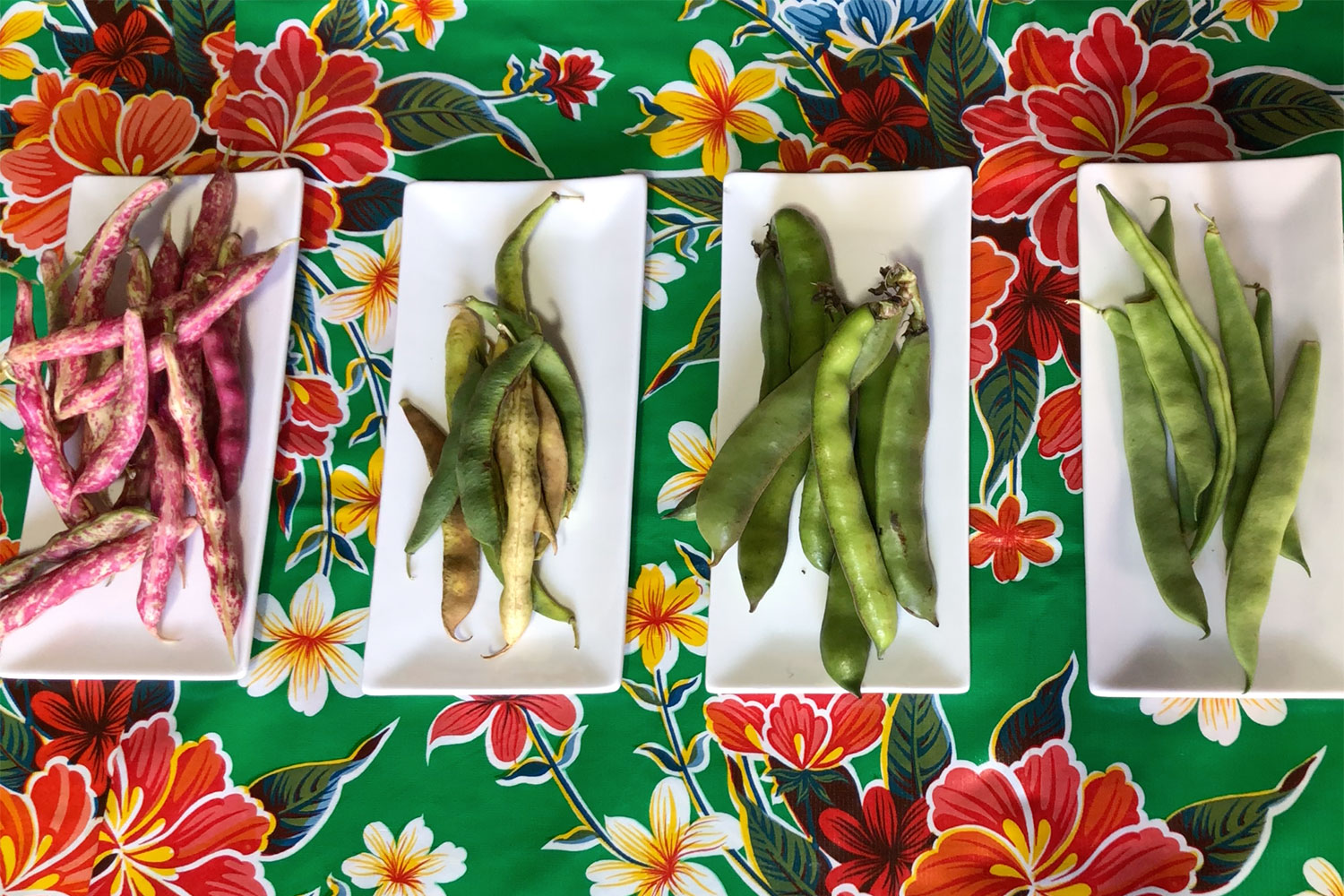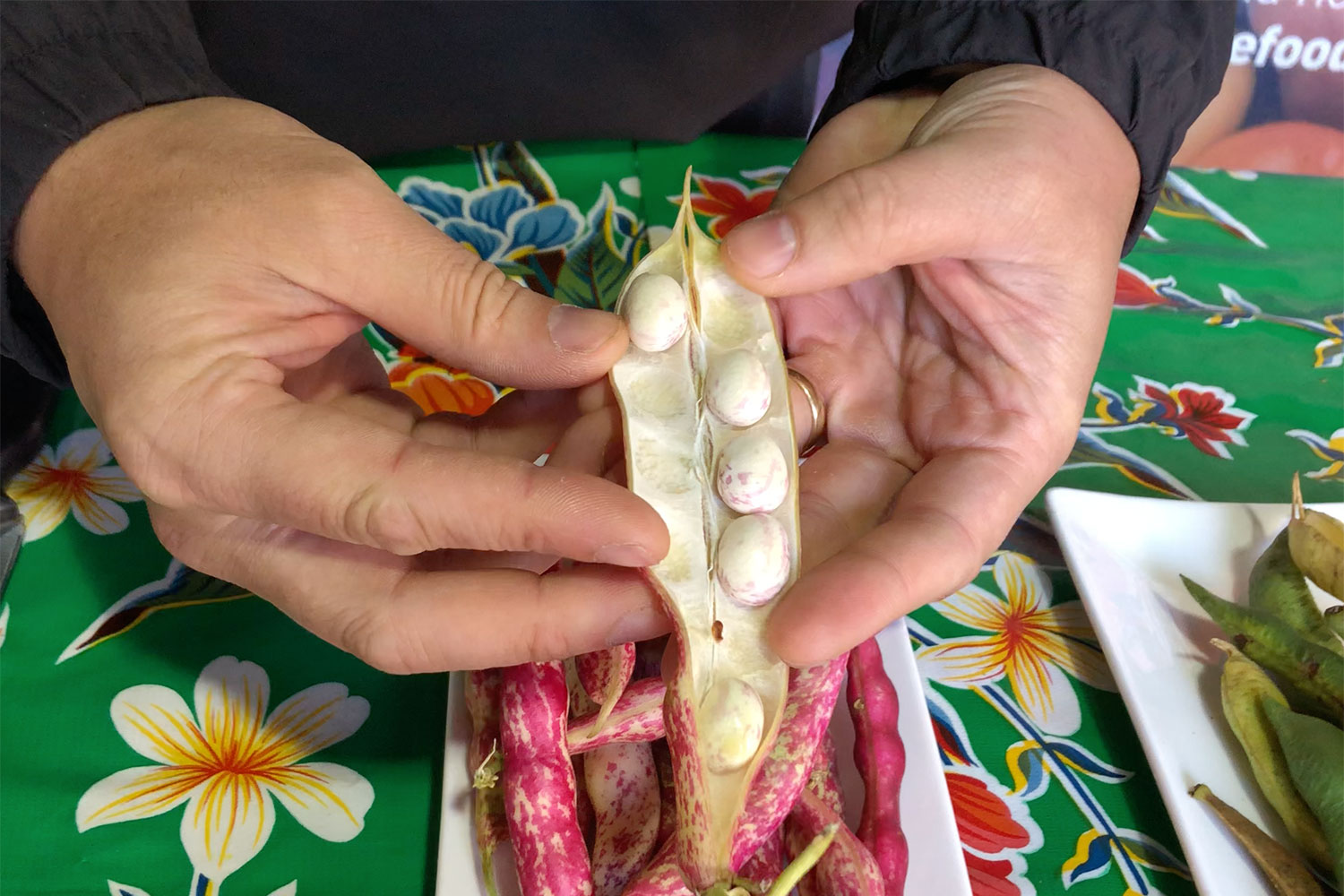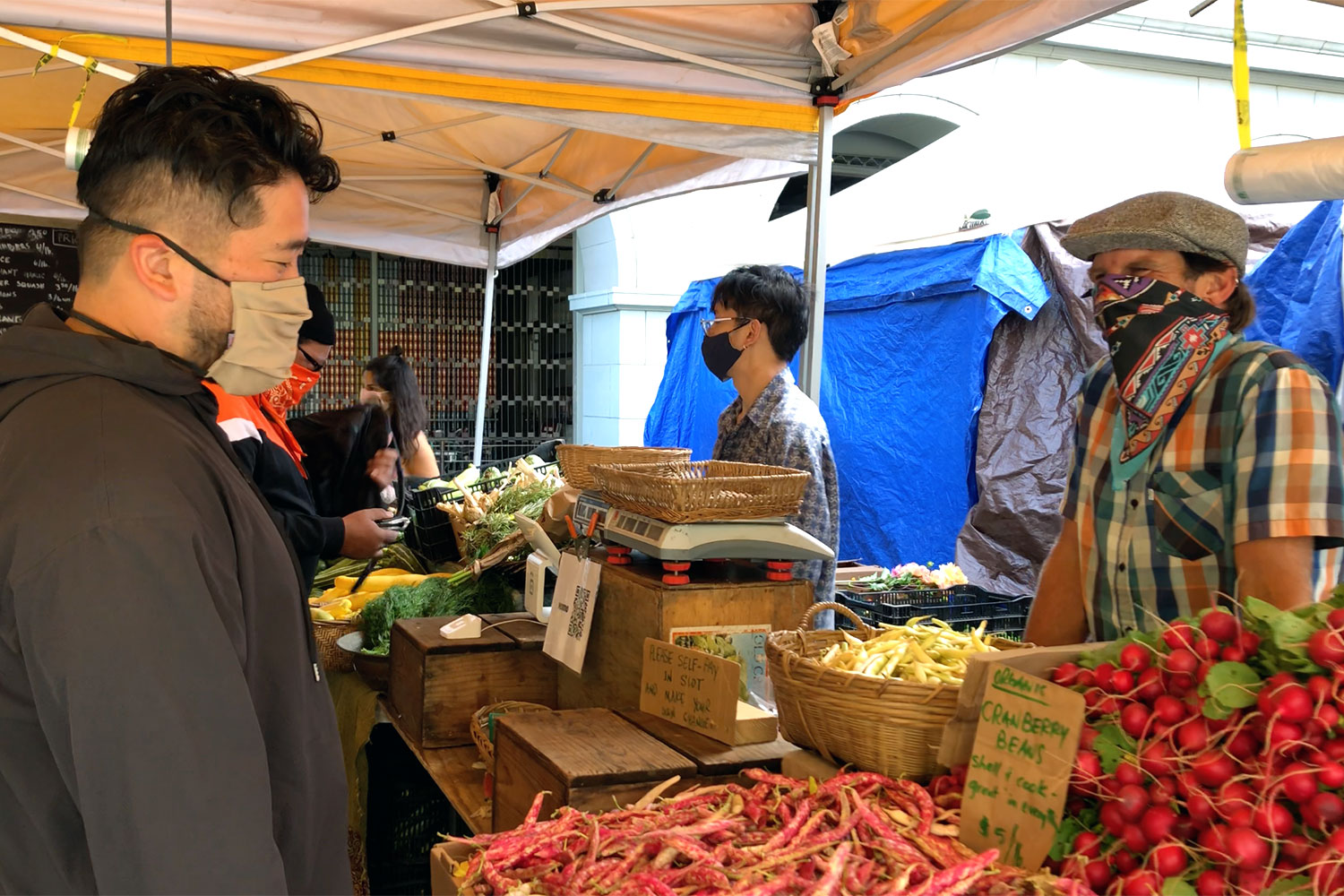Video: What Do You Do with Shelling Beans? with Brandon Jew & Lonely Mountain Farm
October 8, 2020
What’s a fresh shelling bean, and how does it differ from the dried beans you find in your pantry? In this new video, Chef Brandon Jew of San Francisco’s Mister Jiu’s stops by the Ferry Plaza Farmers Market in search of fresh shelling beans from Lonely Mountain Farm, then provides a quick bean primer and offers tips for preparing perfect shelling beans at home.
While most of us are familiar with dried or canned beans, you can find fresh beans still in their pods at the farmers market in the late summer and fall. Nutritionally, shelling beans are similar to dried beans, but they take less time to cook than dried beans and are packed with flavor. Unlike green beans, the pods of shelling beans should be removed before cooking.
Chinese cuisine incorporates all kinds of beans, and Brandon draws on his experiences eating Chinese bean dishes for inspiration when cooking with shelling beans at Mister Jiu’s. When he lived in Shanghai, he would go to an udon restaurant where they used a bean similar to a pinto bean that was lightly sweetened and incorporated into very spicy dishes. Eating this dish opened his mind to thinking of beans in a different way. A particular dish he loves to make now is traditionally made with bacon, but at Mister Jiu’s they use smoked tofu as the backbone to impart a smokey flavor to the dish. The smoked tofu is cooked in a wok along with leeks, fermented black beans, chilies, chili oil, seasoned with black vinegar, soy sauce, ginger, and cooked shelling beans tossed with their cooking liquid to finish the dish.
Brandon has formed a special connection with Lonely Mountain Farm, an organic farm in Corralitos, near Santa Cruz. First-generation farmers Kenny and Molly Baker have found their niche growing unusual vegetable and herb varieties, heirloom beans, and cut flowers for farmers markets and restaurants. Support Lonely Mountain Farm at the Ferry Plaza Farmers Market on Saturdays, and visit Mister Jiu’s for their seasonal takeout and delivery menu.
Brandon Jew and Lonely Mountain Farm will be featured in CUESA’s Sunday Supper: A Farm to Home Feast on October 18. Learn more.

Fresh Shelling Beans Tips
Selecting beans: When choosing shelling beans at the farmers market, you’ll find anything from young beans with tight, slightly green pods to more mature beans with brown, leathery, shriveled pods. They are all good; the beans will just have different cooking times, so make sure when shelling them to keep the young, greener beans separate from the more mature beans. If you are cooking younger and older beans together, add the older ones to the pot first and cook them for a few minutes before adding the younger beans, so they finish cooking at the same time.
Shelling: Unlike snap or filet beans, shelling beans are pretty sturdy and do not require delicate prep work, so anyone can help you with the working of shelling them (a great task for kids!). Shelled beans will keep in the refrigerator for a couple days, but Brandon prefers to shell and cook his beans on the same day for best results.
Cooking: Fresh shelling beans don’t require soaking, and they cook in about half the time as dried beans. Brandon always cooks his beans separately before incorporating them into a final dish. This allows time to cook them gently, so that all the starch has been cooked out and the beans are perfectly creamy on the inside (see the recipe below). Try to avoid cooking them to the point where the skins burst, so they keep their shape and texture. The bean should pop in your mouth for that pleasurable eating experience.
Saving the broth: The bean cooking liquid is like a stock that’s been imparted with the flavor and starch from cooking the beans. It can be used like pasta cooking water to tighten up sauces and add flavor when finishing a dish. Stir in a couple tablespoons of the liquid along with a little butter or olive oil, and it will bring everything together and be super tasty.
Using beans: At home, Brandon likes to incorporate cooked beans into soups. Combine the cooked beans and some of their liquid in a pot with some broth. In a separate sauté pan, cook some greens, such as spinach, kale, or chard. Add the greens to the beans and broth and season the soup with salt and pepper to taste. Or simply bloom a little garlic in really good olive oil (see the recipe below), then add the cooked beans and some of their broth, stir in a lot of tender herbs, season to taste, and enjoy.

Perfect Shelling Beans
This is how chef Brandon Jew cooks fresh shelling beans, like the visually stunning Tongue of Fire cranberry beans from Lonely Mountain Farm. This simple recipe is a great side dish to a piece of meat or grilled vegetables, or works as a hearty dish on its own.
INGREDIENTS
Fresh shelling beans, such as Tongue of Fire cranberry beans (about 1 pound unshelled beans yields about 2 cups cooked beans)
Nice olive oil
Garlic, peeled and chopped
Bay leaf
Hearty herbs like thyme and rosemary, leaves removed from stems
Salt and pepper
PREPARATION
Open up the outer shell and remove the beans into a bowl. Rinse the beans in water to remove any debris. Drain and set aside.
Pour a few glugs of the olive oil into a heavy-bottom pot over medium flame. Bloom the aromatics in the olive oil by adding the garlic, bay leaf, and other herbs and cooking slowly to let the oil infuse with these flavors. Add the drained beans and stir them around to coat the beans with the aromatic oil. Cover with water, with about an inch of water on top of the beans at all times. You want the beans to always be submerged in the water, but just barely, so keep an eye on them and add more water to the pot as needed. Bring the waterto a simmer and cook gently, making sure the beans never go above that gentle simmer.
Cook for 15 minutes, then taste a bean. If it’s fully cooked (creamy, non-starchy inside, with the skin still intact), set them aside in their liquid until you are ready to use them in another dish. If not, keep cooking them gently, checking every 5 to 10 minutes until they reach that perfect consistency. Season to taste with salt and freshly cracked pepper.

